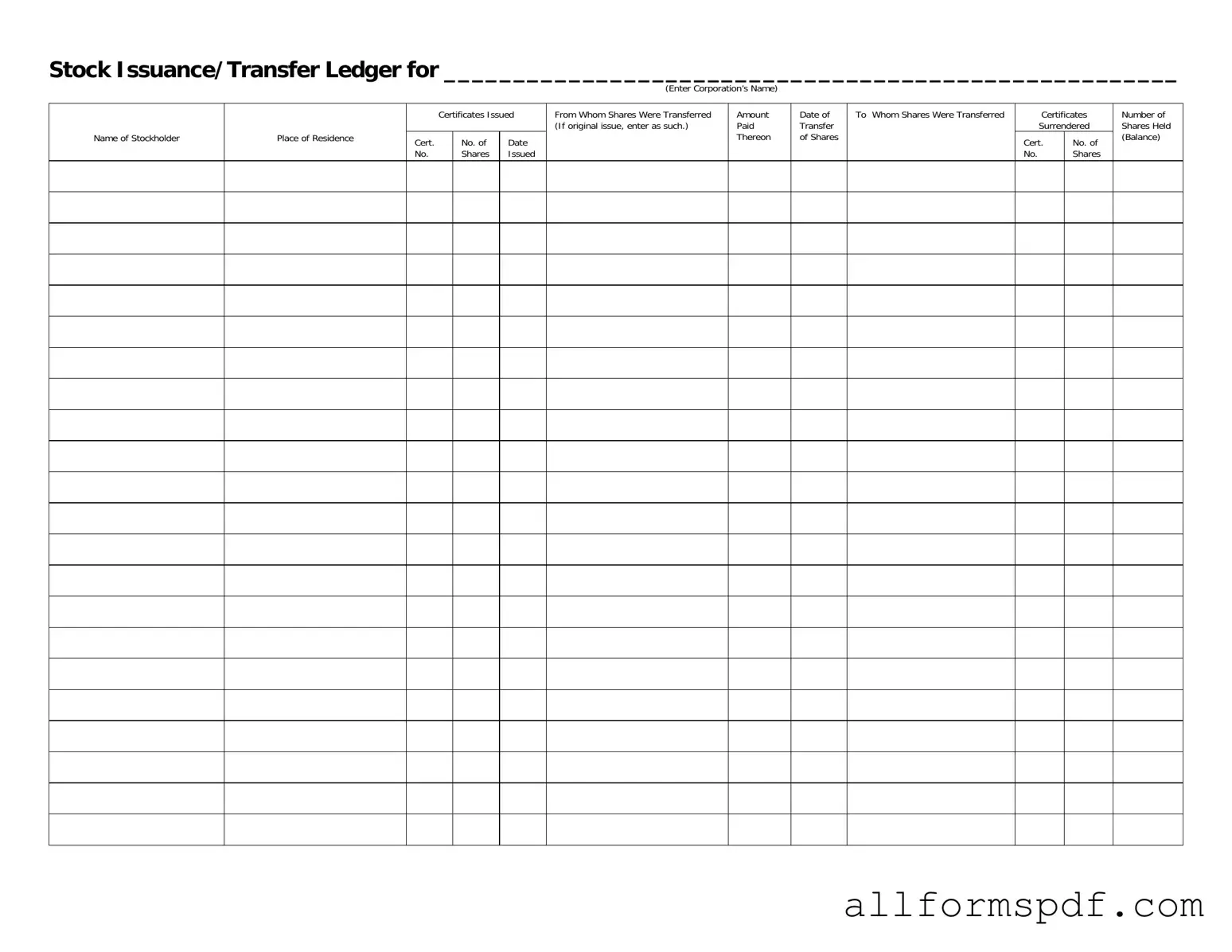Completing the Stock Transfer Ledger form requires attention to detail. One common mistake is failing to enter the corporation’s name correctly. This information is crucial as it identifies the entity involved in the stock transfer. Omitting or misspelling the corporation's name can lead to confusion and may result in legal complications.
Another frequent error involves the name of the stockholder. Individuals often forget to include the full legal name, which is necessary for accurate record-keeping. Using nicknames or abbreviations can create discrepancies that complicate future transactions or audits.
Inaccurate information about certificates issued is also a common issue. The form requires specific details regarding the certificate numbers and the number of shares issued. If these figures are incorrect, it can lead to significant problems in tracking ownership and value of shares.
Many people neglect to indicate the date of transfer of shares. This date is important for establishing the timeline of ownership and may affect tax implications. Without a clear date, it becomes challenging to verify when the transfer occurred.
Another mistake is failing to identify the party from whom shares were transferred. This section should clearly state the original owner of the shares. Omitting this information can lead to disputes about ownership and may complicate future transfers.
Individuals often overlook the section regarding certificates surrendered. If shares are being transferred, the original certificates must be surrendered and noted on the form. Not doing so can create confusion about the validity of the shares being transferred.
Finally, many people forget to update the number of shares held (balance) after the transfer. This final tally is essential for maintaining accurate records of ownership. An incorrect balance can lead to misunderstandings about ownership rights and responsibilities.
